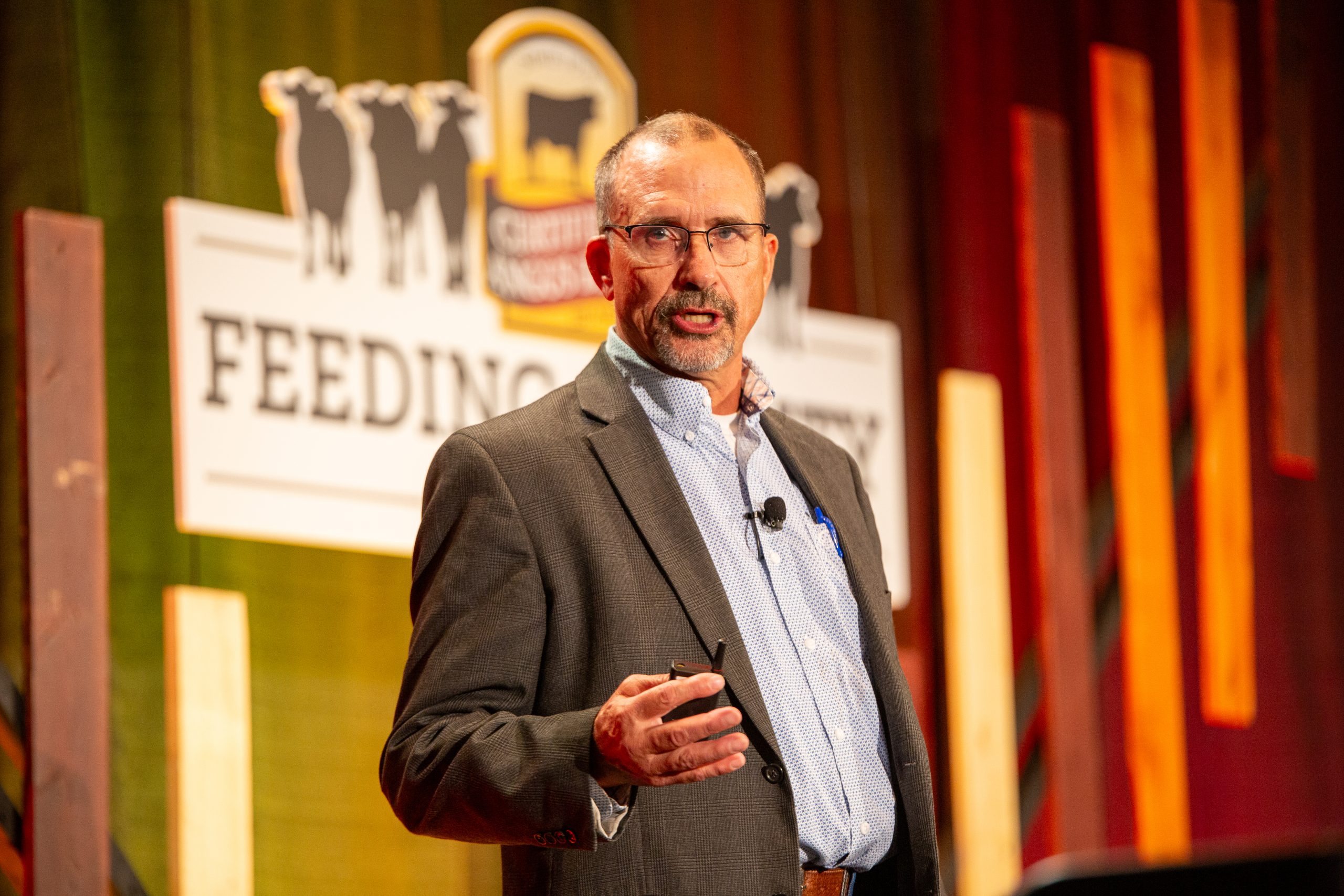Decisions matter for replacement heifers

With cow herd numbers at the lowest levels producers have seen for some time, at some point, the herd will need replacements.
Dr. Randall Spare, a veterinarian with Ashland Veterinary Center in southwest Kansas, told attendees Aug. 20 at the Certified Angus Beef Feeding Quality Forum in Dodge City, Kansas, how important certain considerations are when working on improving their herds.
Spare tends to think of replacement females as a finite objective, but with the idea that decisions have to be made about these heifers. Producers often hear they’re all in the food business, and each segment of the beef industry has different customers.
“We’re all involved,” Spare said. “Some of those are feeder people, people that buy our calves after we grow them. Some are commercial cow-calf. Some of us sell food straight to the table. But ultimately, somebody is going to eat our food.”
There are two types of beef producers: price-takers and price-makers, and Spare said he’s worked with both. One client of his used to sell the calf crop the same day of the year in October, despite what the market looked like at the time.
“They took the price that they were given that day at that particular week. They had one chance to sell those cattle, and they were price-takers, so they were in the commodity business,” he said. “Those people have changed today and become price-makers. They add value to everything they do.”
Spare said they now sell their fat steers at 14 to 15 months of age and breed every heifer.
“They make value,” he said. “There are no culls on their ranch, so they realize they’re in the food business.”
Those raising replacement heifers can add value in a couple of different ways, Spare said.
Getting advice from a nutritionist is important because feed is a major cost, Spare said, and value is added with a health program.
Temperament plays a role, too.
“Snorty cattle don’t do anybody any good,” Spare said. “I’ve had plenty of accidents. I’m getting slower and more mature, and I don’t get as close anymore, but temperament is important.”
Genetics can improve the herd, too, and EPDs, or expected progeny differences, help producers compare two sires against their herds to get the performance they want.
Indexes can be helpful as well, and are economic, multi-grade selection tools that have been put in place that use the value of output minus the inputs—or the costs of production.
A tool that’s been around since about 2009 is genomics. By getting a blood sample, the genetic parent of an animal can be determined.
“We can also identify genetic defects,” Spare said. “We can create EPDs for those commercial animals using that process.”
The results of genomic testing can be turned into indexes that can help make herd management decisions. One index measures the cost of production from the time of birth to harvest.
In his example, one animal had a value of 284, and the bottom animal was at 249, and that was about a $30 difference, he said.
In the 30-plus years Spare has been a veterinarian, he’s found the best way to learn about the producer, his herd and management is to visit with him after the work is done.
“Those are things that I often bring to the table when I’m working there, we’re done working, and we’re talking about things to do to help add value to their operation,” he said.
The people doing the work are often involved with decision-making, and Spare found how important it is to ask questions. Producers will arrive at their own conclusions, he said.
“But those people are curious,” he said. “Why is that? How does this work? How do I get more prime? Why do I have yield grade 4s? Why did they die? You know what I like to ask? Why did they live? More of them live than die. As veterinarians, we’re taught to find the problem. I want to find the solutions. Why are those cattle living? Why aren’t they grading prime?”
Another ranch realized the value of genetic testing, and, since 2019, Spare has tested about 1,200 head of heifers.
The rancher identified the high-performing heifers and created EPDs that will follow those females through the rest of their lives. This year, all their heifers were bred in a short breeding season, and they’ve created even more value.
The rancher can either sell them all or pick the ones he wants because of the information available, such as the reproductive history of pregnancy, noting if pregnancy was by artificial insemination. The rancher’s plan takes into account animals that were bred for the next cycle and those that were bred in the third cycle, he said.
“It’s cool,” Spare said. “I love this. There’s a risk. Now they understand the risk and benefit of feeding those heifers.”
Spare enjoys helping beef producers find their way in the cattle production business and to guide their next steps.
“We wanted to provide tools for ranchers to begin to decide what they can afford for replacement heifers,” he said. “I think that’s the wrong question. I think the question is, what do I want to put into my heifers as somebody who will have market access and (has many options?”
Kylene Scott can be reached at 620-227-1804 or [email protected].



